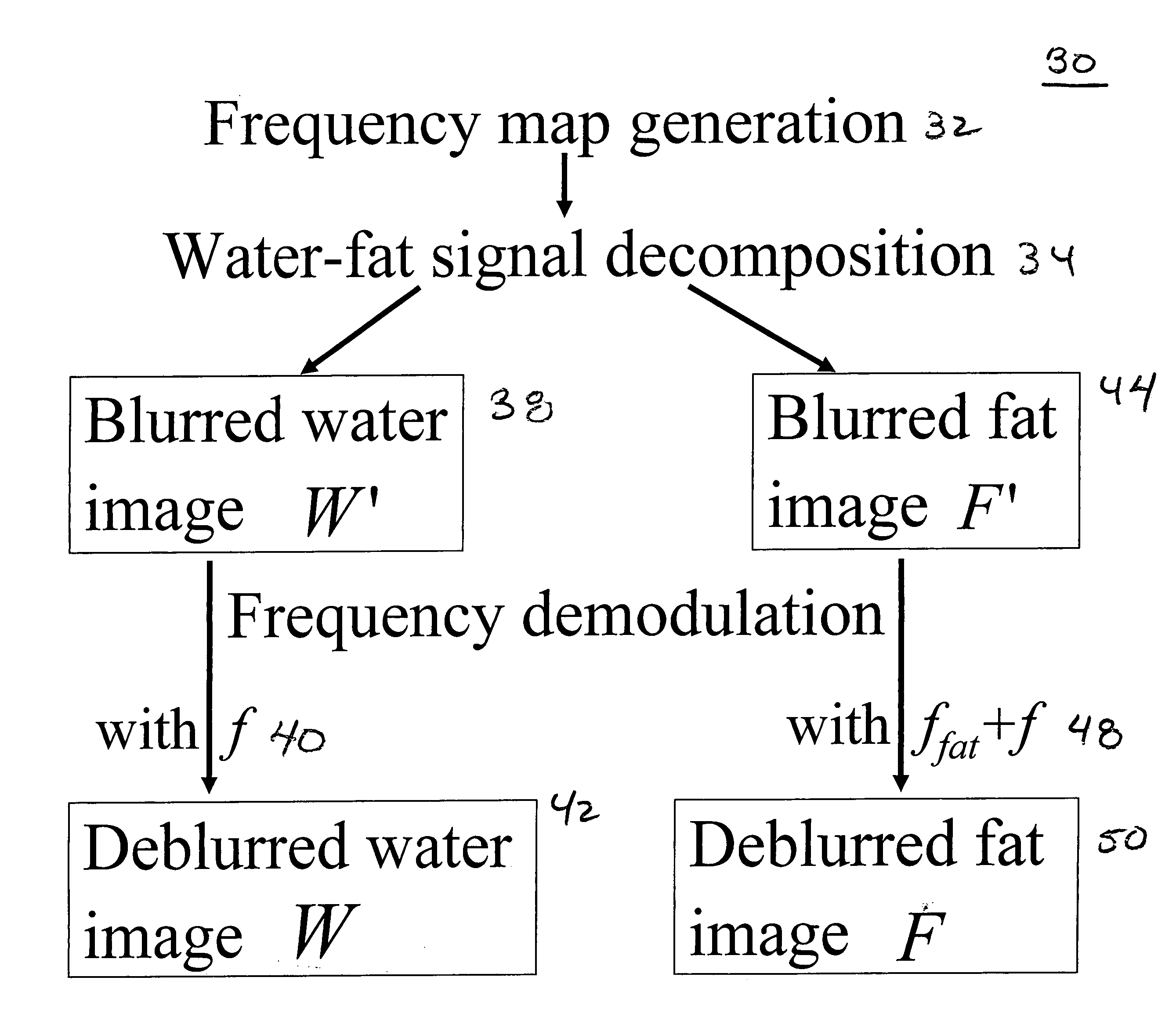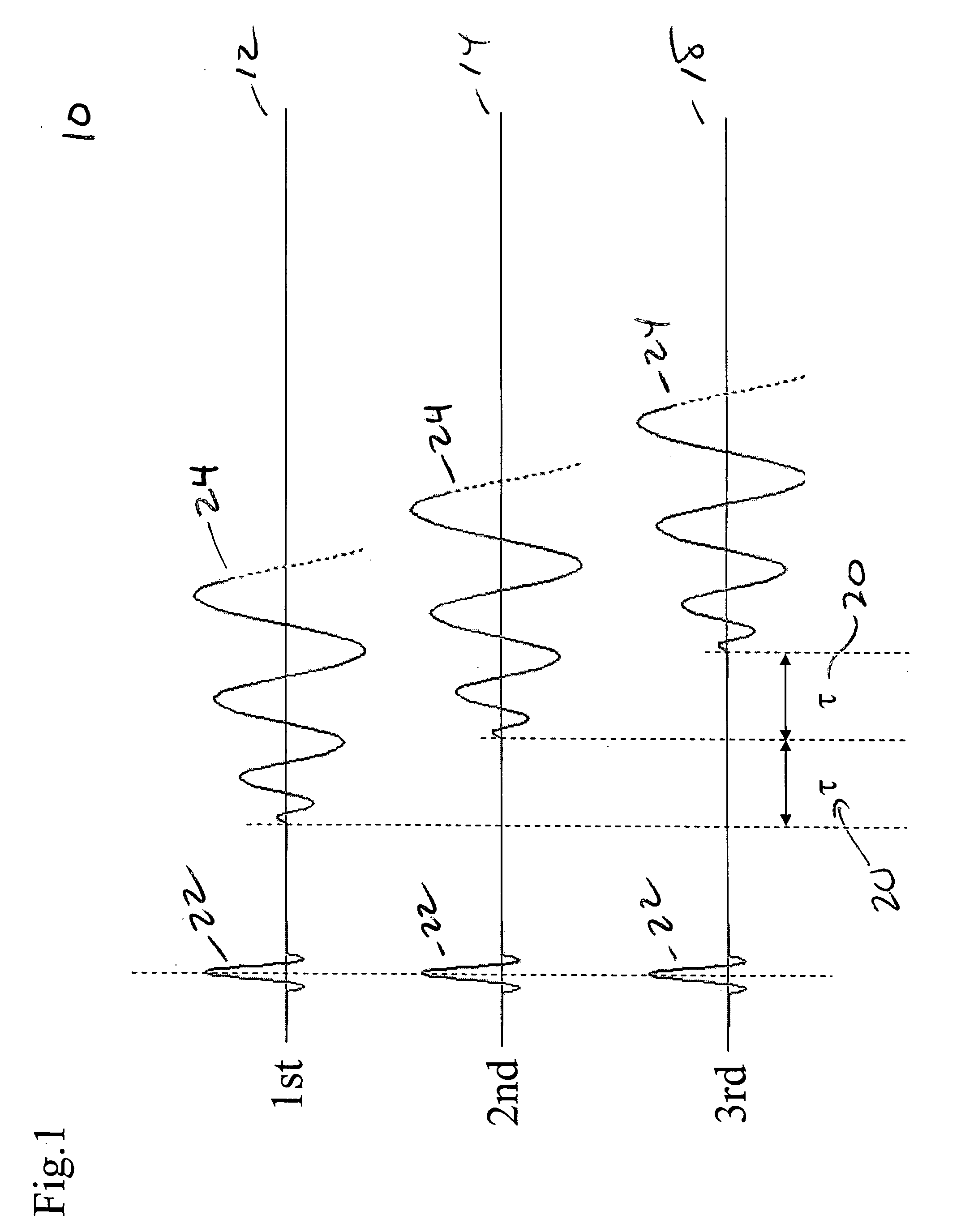Dixon Techniques in spiral trajectories with off-resonance correction
a technology of offresonance correction and dixon technique, which is applied in the direction of diagnostic recording/measuring, instruments, and measurements using nmr, can solve the problems of severe geometric distortion, blurred artifacts in the reconstructed image, and artifacts in magnetic resonance imaging (mri)
- Summary
- Abstract
- Description
- Claims
- Application Information
AI Technical Summary
Benefits of technology
Problems solved by technology
Method used
Image
Examples
examples
FIG. 6 shows the axial brain images. In FIG. 6, (a) and (b) are the water and fat images using the spiral 3PD technique, respectively. FIGS. 6(c) and 6(d) are the water and fat images using the spiral 2PD technique, respectively. FIG. 6(e) is one of the images directly reconstructed from the acquired data (TE 4.4 ms). FIG. 6(f) is the one of images reconstructed from the data with SPSP pulses (TE 7.5 ms) after off-resonance correction. FIG. 7 shows the axial pelvis images. In FIG. 7, (a)-(f) were acquired under the same conditions as those in corresponding locations in FIG. 6.
As observed in FIG. 6(e) and FIG. 7(e), the original images are affected by the high level of blurring artifacts for most of the imaged regions. However, as (a)-(d) in both FIGS. 6 and 7 show, these blurring artifacts are substantially reduced while unambiguous water-fat decomposition is achieved in both the spiral 3PD and 2PD techniques. FIG. 7(f) (SPSP pulses) shows that some fat signals in the right anteri...
PUM
 Login to View More
Login to View More Abstract
Description
Claims
Application Information
 Login to View More
Login to View More - R&D
- Intellectual Property
- Life Sciences
- Materials
- Tech Scout
- Unparalleled Data Quality
- Higher Quality Content
- 60% Fewer Hallucinations
Browse by: Latest US Patents, China's latest patents, Technical Efficacy Thesaurus, Application Domain, Technology Topic, Popular Technical Reports.
© 2025 PatSnap. All rights reserved.Legal|Privacy policy|Modern Slavery Act Transparency Statement|Sitemap|About US| Contact US: help@patsnap.com



